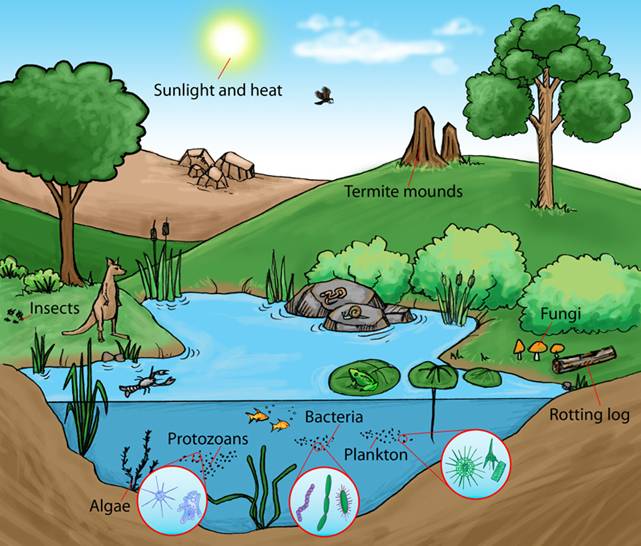“No matter how brilliant your mind or strategy, if you’re playing a solo game, you’ll always lose out to a team.”
-Reid Hoffman, CEO Netflix
Darwin Overturned
Years ago, I was fortunate to be introduced to a new theory of evolution put forth by Dr. Martin Nowak, head of the Program for Evolutionary Dynamics at Harvard. It seems that Darwin may have had it all wrong. The evolution of humanity may not have been the result of the survival of the fittest after all. According to Nowak, those who survived were the ones who cooperated with one another. In Nowak’s groundbreaking book “Super Cooperators: Altruism, Evolution and Why We Need Each Other To Succeed”, he de-bunked the myth of the rugged individual and explained how cooperation, not competition, advances complex systems. Even before learning of Nowak’s work, I always felt brands should bond together and make it easier for consumers to make choices. Must every decision be made one brand at a time?
Emergence of Brand Ecosystems
We live in a world where choice seems infinite and overwhelming. In this world, systems are simplifying complexity and creating greater value by connecting complementary pieces. Think Smart Home, Connected Care and all initiatives under The Internet of Things. Brand ecosystems are also now emerging, and brand silos are giving way as consumers are accustomed to and even enjoy blurred boundaries, new fusions and novel collaborations. Think about today’s “SXSW” which is now a mega gathering where music meets technology and marketing. With opportunities to shift toward experience and content, brands can tap into complementary brands to create novel brand ecosystems. What consumer doesn’t appreciate a well curated bundle of brands that delivers on the moment? It makes life so much easier. GOOP is a master curator and has created a rich brand ecosystem.
There are some early signs of the emergence of brand ecosystems. Over 40% of the Financial Times’ top 25 brands of 2019 have partnered with at least one other brand to improve customer experience and drive increased engagement. And, ecosystem-centric loyalty programs are on the drawing boards in early stages and expected to become prominent. One example of model of a loyalty ecosystem is Amazon Prime. Prime serves the currency of on-demand convenience across sub-brands that include Amazon’s dot-com business, Prime Video, Prime Now, Whole Foods, and others.
Exploring Brand Connectivity
To explore this opportunity, companies need to think creatively and strategically about partnerships across categories, including with would-be competitors. This will give rise to frenemy relationships across markets. Creating a brand ecosystem requires brands to look across both commerce and non-commerce for opportunities. Brands should explore strategic partnerships that have the potential to provide more holistic solutions tailored to individual consumer lifestyles. It reminds me of a celebrity playlist – awesome curation done well around a specific taste. The ecosystem should enable a disparate set of brands to craft a coherent set of benefits that feels personally relevant to the consumer. Likewise, it should offer benefits for member brands: broader access to consumers, cross-marketing opportunities for acquisition and engagement, and marketing and IT economies of scale. Imagine an ecosystem of brands that you would like to see?
Principles for a Brand Ecosystem
Since consumers and brands stand to gain from ecosystem marketing, I can envision ecosystems being accepted and brands potentially consolidating efforts under flagship ecosystem products and programs. To explore branding ecosystems, let’s learn from the failures of traditional coalition marketing and consider the following principles in building one.
1. Common Target: The collaboration should serve a well-defined consumer target or aspirational lifestyle with each brand fulfilling different dimensions of a rich value proposition for the target.
2. Mutual Brand Equity Lift: The ecosystem should elevate brand equity for all involved, where each brand plays a unique role and reinforces the value of other brands in the system.
3. Synergistic Products and Services: The ecosystem benefit must be greater than the sum of the individual brand silos, and ecosystem delivery on value proposition should be superior.
4. Seamless Touchpoints: Engaging any point in the ecosystem must be intuitive, responsive and delightful. It’s an integrated system not a brand federation.
5. Full Brand Commitment: Each brand must allocate adequate resources and work along agreed upon principles of success to drive success of the ecosystem which, in turn, drives success for each brand.
6. Performance Standards: Brands within the ecosystem must commit to standards and processes for tracking key performance indicators, adhering to regulations, and establishing protocols for connecting technologies and sharing data.
Brand ecosystems are promising and transformative. Consumers can gain experiential, convenience and emotional benefits. Brands can gain increased visibility, brand equity halo’s and efficiencies from access to more channels, data, shared infrastructure, and cross-marketing opportunities. However, it requires a new way of engaging consumers and the market, new practices and tools, and most important – systems thinking. This is an opportunity for marketing innovation, a time to study the problem from multiple perspectives, discover a variety of ways to succeed, and build, test and refine solutions. With this level of rigor and experimentation, brand ecosystems could become a new model of market engagement.
Photo Credit: Tsilia Yotova, ZME Science
Enjoying Overhead Space? There’s More to Love.
Subscribe to Overhead Space to receive mind-expanding content that helps you connect the dots in new ways.




